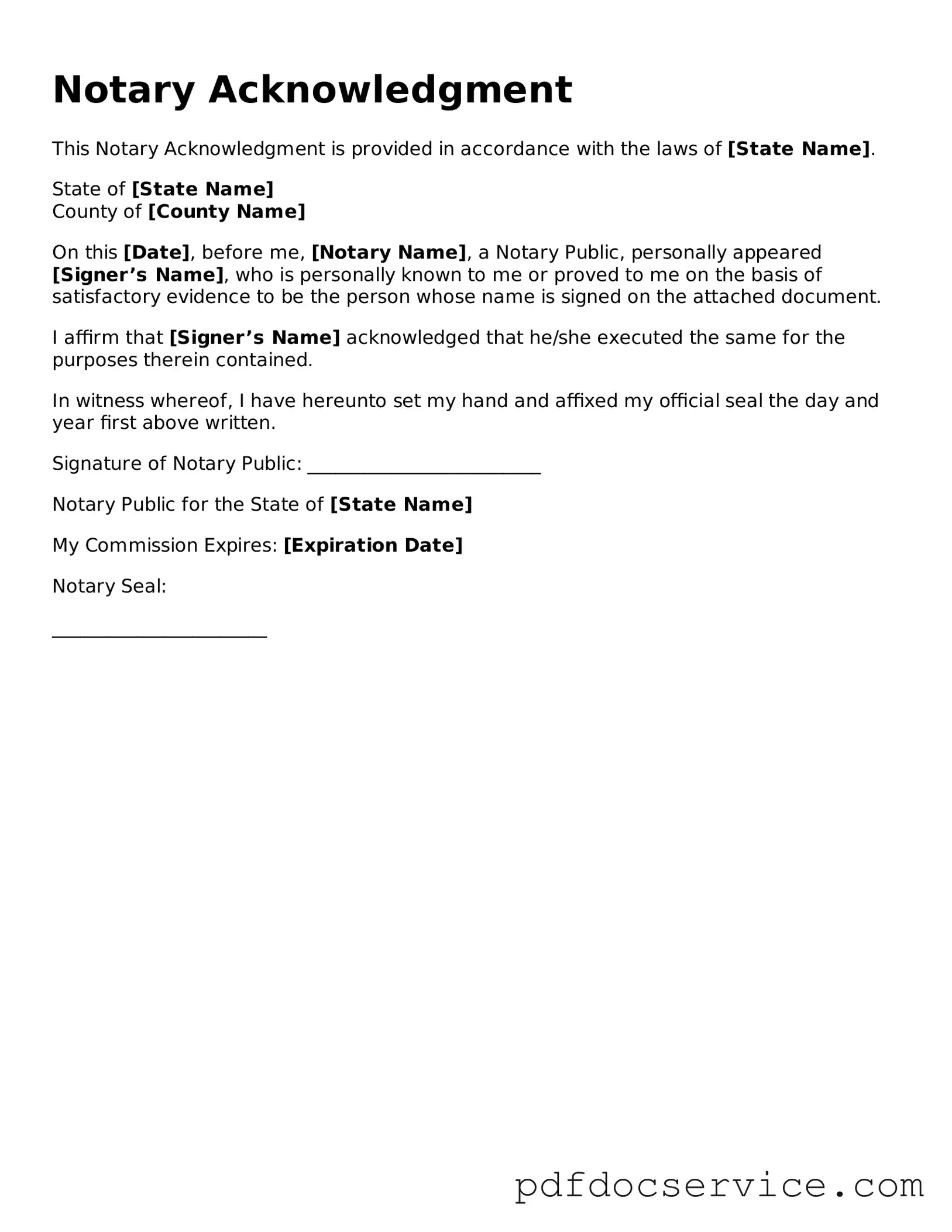A Notary Acknowledgement form is a document used to verify the identity of a signer and confirm that they willingly signed a document. This form serves as proof that the notary has witnessed the signing and has confirmed the identity of the individual signing the document. It is commonly used in various legal transactions, including real estate deeds, contracts, and powers of attorney.
Why is a Notary Acknowledgement necessary?
A Notary Acknowledgement is necessary for several reasons:
-
It provides assurance that the signature on a document is genuine.
-
It helps prevent fraud by verifying the identity of the signer.
-
It ensures that the signer understands the document they are signing.
-
It can be required by law for certain documents to be legally binding.
Who can act as a notary public?
A notary public is an individual authorized by the state to perform notarial acts. Generally, they must meet specific requirements, which may include:
-
Being at least 18 years old.
-
Being a resident of the state where they are commissioned.
-
Completing any required training or education.
-
Passing a background check.
Each state has its own regulations regarding notaries, so it is essential to check local laws for specific qualifications.
To complete a Notary Acknowledgement form, follow these steps:
-
Gather the necessary documents that require notarization.
-
Visit a notary public with the document and a valid form of identification.
-
Sign the document in the presence of the notary.
-
The notary will complete the Acknowledgement form, noting the date, your identity, and their signature and seal.
Ensure that all information is accurate to avoid any issues later.
Is a Notary Acknowledgement the same as notarization?
Notarization is the process of a notary public witnessing the signing of a document and verifying the identity of the signer. A Notary Acknowledgement is a specific type of notarization that involves the signer acknowledging that they signed the document willingly. While all Notary Acknowledgements are notarizations, not all notarizations are Notary Acknowledgements. Different types of notarizations may serve different legal purposes.
What happens if a Notary Acknowledgement is not completed correctly?
If a Notary Acknowledgement is not completed correctly, the document may not be considered valid. This can lead to various issues, including:
-
Challenges in enforcing the document in court.
-
Delays in transactions.
-
Potential legal disputes regarding the authenticity of the signature.
To avoid these problems, it is crucial to ensure that the Notary Acknowledgement is filled out accurately and completely before submitting any documents.
